Questionhi im gettin 1 each of these on friday i just wondered if u had any advice 4 me please.
thanks
kelly
AnswerHi Kelly
Here is a general care sheet that I wrote some years ago
I hope that this helps and it is just a general care sheet to get you started in the right direction
There are many sources of information available on the web for these lizards usually written by breeders that have excellent information
I encourage people to do a search on "Bearded Dragon Care Sheets" and if you have any more questions-please write back and I will try and be of help
Sandy aka LadyGecko
Keeping and Caring for Bearded Dragons
The Inland Bearded Dragon is the most commonly kept here in the US and IMHO they make one of the best reptile pets for households with young children
Originally from Australia and no longer exported from there for many years there are many other species of bearded dragons but here in the US the most popular species is Pogona viccicepps or the Inland Bearded Dragon
In their native habitat they populate many diverse areas of Australia-both urban and rural-ranging from woodland to open plains areas
In fact they show little fear of humans in the wild and they are commonly found basking on fence posts and other places to get the maximum warmth of the sun
They are a bright inquisitive lizard as babies that quite often turns into a "branch potato" as an adult -moving about the Viv only when they feel the absolute need to do so but this does not subtract from their charm
Despite their ability to inflate and darken their entire body -puffing out the flap of skin under their neck which is called their beard -when in frightened or in a threatening posture they are IMHO one of the most docile lizards to keep and interact with.
Who can resist a baby at the size of 6 inches that is looking up at you from a tank in the pet store saying "Please take me home"
Their care and food preparation is a bit more complicated than insectivores with being an omnivore but well worth the effort
Watching a group of baby dragons chase after crickets or dig into a bowl of veggies/greens is in itself a very rewarding experience for any dragon keeper.
In addition to insects greens and veggies should be offered at a very young age and babies should not be stuffed with crickets and worms but rather encouraged to eat leafy food
Their dietary needs shift from primarily insects to more of the green stuff as they mature and young dragons that have not been encouraged to eat both will often not do so as adults
One of the most important things that you will purchase for your dragons is a calcium supplement
Without this supplementation they will develop a condition known as Metabolic Bone Disease (MBD) that can deform and disfigure their skeletal structure -cause nerve damage and seizures and eventually lead to their death
A plain calcium supplement (powder) should be used every insect feeding (in babies and gravid females) and it can also be added in liquid form to their drinking water and their veggies
A multivitamin should also be used one time per week for babies and once every two weeks for adult male and non-gravid females and calcium with vitamin D3 should be used in the place of plain calcium when using the vitamin/mineral supplement
If you use Rep-Cal Calcium and Herptvite -these are mixed together when used and will take care of the vitamin/mineral needs in addition to providing some D3
If your beardie gets a good amount of natural sunlight-you can give very little D3 as they get it from the direct exposure to the sun and giving too much D3 can result in overdosing
And yes-I did say drinking water-many baby dragons will drink quite enthusiastically from a water dish and contrary to popular myth-they will not develop respiratory infections from laving a clean dish of water in the Viv with them at all times
For the baby dragons that will not drink from a water dish-they should be sprayed twice daily with a fine mist of water on their heads so that they can lap up the water as it runs down their heads
It is very important to keep these young animals hydrated at the high temperatures they they need to maintain good health
Bearded dragons are a Diurnal species of Lizard that require UV rays either from direct exposure with the sun or artificially simulated by a UV light in their Viv or both depending upon the climate that you live in and how much outdoor exposure that that an get on a weekly basis
It has been shown that a few hours of outdoor exposure per week to the sun helps them absorb calcium via vitamin D3 and indoor artificial UV light exposure can be cut down when they are brought outside on a regular basis or if your climate permits-they can be kept outside on a year round basis
Lighting is a hotly debated subject with these animals and there is a vast array of bulbs to choose from in the pet stores for dragons that are never brought outdoors
However it is done-bearded dragons must have daily exposure to UV to properly metabolize calcium
As with most reptiles maintaining a correct gradient of temperature is very important in their enclosure/viv
If these animals do not have a basking area with a temperature of 95 to 100 degrees they will not digest they food properly and will stop eating
The next items that you will need to purchase are a spot basking light bulb -a clamp light fixture and a good thermometer
All three of these items work together with ensuring that your dragons have the right temperatures in their enclosure
Place the light at one end of the viv and place some branches or securely placed rocks (make sure that they can not become dislodged and fall) underneath it so that they can absorb heat from both above and below
Placement of the light is also done so that there are 3 main temperate areas in the Viv
An extremely hot one and medium one and a cooler one
This gives your dragon the freedom to move from one area to another to adjust their body temperature as lizards do not maintain a independent constant internal temperature as mammals do
While they are not in fact"cold blooded" the term was coined because their body temperature will drop or rise depending upon the temperature of their surrounding areas
A heat rock should NEVER be used with these animals as it will cause burns on their bellies
This now brings us to the size of the enclosure/viv that you would like to keep your dragons in
A minimal size for one baby dragon is a 10 gal tank but this should not really be considered as they quickly outgrow it and why bother with the small tank unless you are going to re-use it to house a small quarantined animal in the future
Also-it is very difficult to get a decent temperature gradient in such a small tank
A 20 gal long aquarium or an enclosure measuring 24" x 12 is a good starter tank an some people just buy the size of tank that they want to house their dragons in as adults to skip the additional cost of multiple tanks
A wire screen lid is usually used to both keep the dragons in the enclosure (in a shallow viv or with tall basking branches) and to provide a place to set a florescent and an incandescent light fixture on the top of the viv
When placing the incandescent fixture on the top of the viv be careful that it does not come into direct contact with any plastic or it will melt it quickly
This is where the clamp on the "clamp light" fixture comes in handy or you can suspend the lights from the ceiling
You will have to adjust the distance of the light from the top of the viv or change the wattage of the incandescent bulb to get just the right basking temperature
Bearded Dragons Cont.
Bugs
One issue that needs to be addressed for people with a phobia of bugs is that while there are many pellet dragon foods on the market-I do not believe that they should be used as a sole food source. These may be used when bugs are unavailable or you are out of greens and veggies(hey -it happens to all of us) and they may be left in the viv with baby dragons for something to munch on that does not munch back but I advise the use of live insects for the protein part of your dragons diet.
There are many types of insects that can be fed to your dragon but most people stick with crickets-meal worms and wax worms-wax worms being fed as a treat
Locusts-roaches and silkworms can also be used in their diet and a variety of at least two to three different insects is best if possible.
NEVER feed them lightening bugs-they are extremely poisonous to bearded dragons and I do not advise feeding any wild caught insects-you never know what they have been exposed to in the way of pesticides
You will want to buy more than a small amount of bugs at a time-the larger the quantity the better the price Buying from the local pet shop will cost you "an arm and a leg" and baby bearded dragons can eat you out of house and home with insects. Look on line for the best prices-you will be surprised as to just how many companies there are in the "bug business" and they offer overnight or next day delivery across the U.S.
Bait shops are another source of feeder insects but they are not nearly as cheap as the online companies as that is where they get their bugs from. You can use any plastic container with a secure lid and lots of air holes for ventilation to keep them in. You can also use an aquarium with a screen lid and a "critter keeper " works well too.
Also important is the feeding and hydrating of your feeder insects An empty insect has little or no nutritional value and the old adage"you are what you eat" definitely applies to your dragons bugs. You can buy a commercial "Gut Load" at most pet stores or you can make your own from various ingredients
.I also add Vionate to my gut load
Equally important is hydrating your bugs and this can be done in several ways. You can buy a product that goes by one name of "cricket quencher" and you mix this up into a gel that the crickets can not drown in. I generally use dark greens and place them in the container with my worms and bugs. Be sure to remove uneaten greens daily so that they do not mold or make a general mess
This provides them with another natural source of calcium as well as added nutrients
Greens and veggies
Remember most of your dragons moisture needs are met by this portion of their diet. A good rule of thumb to follow when buying greens and veggies for your dragon is to stay away from the "cabbage family" no cabbage-broccoli-kale-cauliflower- etc. Choose dark leafy greens such as collard-turnip-mustard-beet -endive and escarole. On occasions when these greens are not available red and green leaf lettuce may be used-it should not be used exclusively and when feeding these 2 greens combine them with fresh parsley and frozen/thawed French style green beans . I mix in grated sweet potato's and red -yellow and green bell peppers and various varieties of squash can also be used
Iceberg lettuce is worthless in nutritional value and should not be used
When feeding fruits-keep them at a small portion mixed in with the greens and veggies as to avoid diarrhea. Some fruits that my dragons really like are grapes- apples(no seeds) and cantaloupe-watermelon-blueberries and strawberries.
Keeping more than one dragon
This is another subject open for hot debate. I have kept two or three (one male and two females) dragons in a viv -usually raising them together and I have experienced few problems with doing so
Many people keep them "harem style"-one male with two or more females to distribute the males attentions . However there are cases when the male is constantly badgering the female to mate and if either starts to show a significant weight loss then they should be separated. Groups of females can usually be kept together with no problems but watching that everyone gets an equal share of food is important and you will want to provide more than one basking area with large groups in a large enclosures.
Bearded dragons can mate and females can become gravid as early as 9 months of age but this should be discouraged until the female is about 18 months to two years of age to give her time to achieve her full growth potential. Males should not be bred before the age of one year for the same reason.
As with any animal there are always exceptions where one animal will simply not get along with another whether it be with dominance or outright aggression and those animals should be kept in separate vivs
I have a friend that seems to have a rather unique problem with her breeder male She separated her pair to prevent further breeding and the male has stopped showing any interest in food. A trip to the vet with tests run for parasites has turned up minimal worm infestation and after being treated with meds he is still showing no interest in eating
This is a rather unusual situation and normally after sulking for a short period of time-males that have been removed from the female will go back to eating normally.
In the world of reptile keeping-learn to expect the unexpected

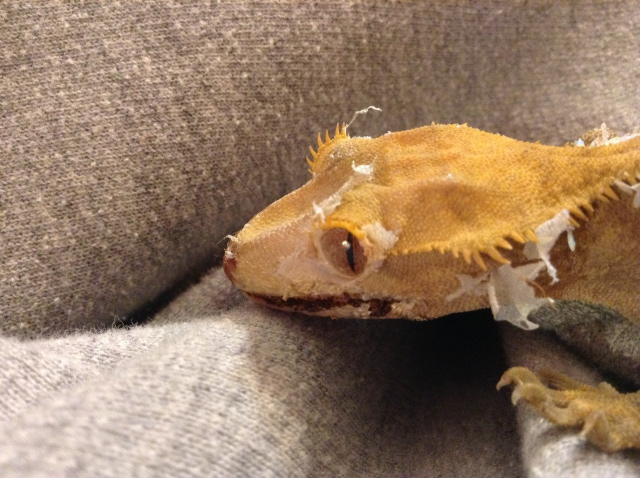 Crested gecko illness
Question
Crested gecko
My crested gecko looks re
Crested gecko illness
Question
Crested gecko
My crested gecko looks re
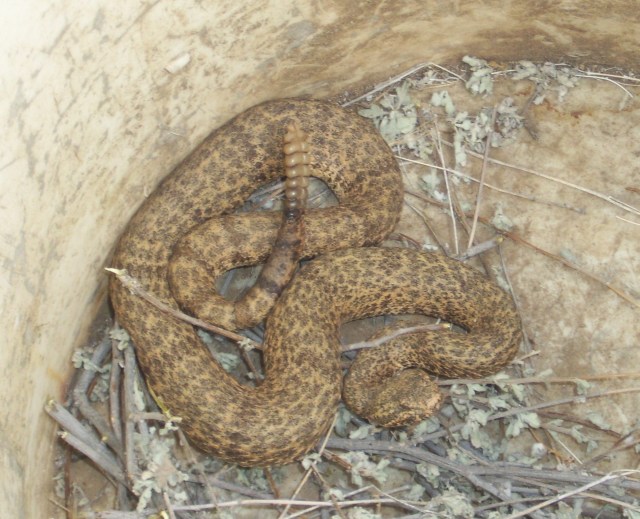 unknown rattlesnake
Question
snake
We live in Texas near Terlingua and Big
unknown rattlesnake
Question
snake
We live in Texas near Terlingua and Big
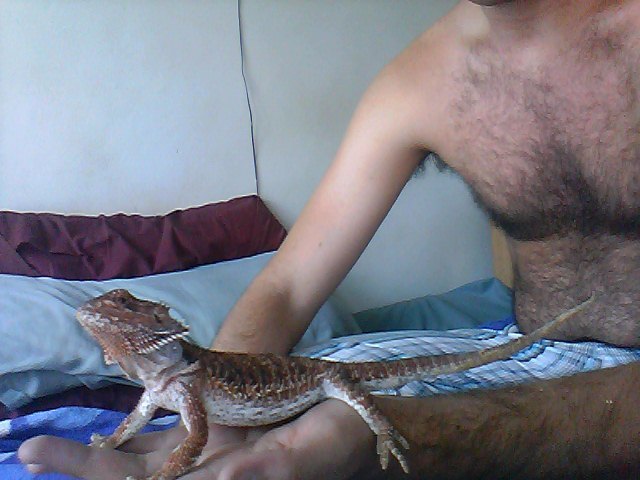 size problem
Question
puff
hey, i have a almost 2 year old fe
size problem
Question
puff
hey, i have a almost 2 year old fe
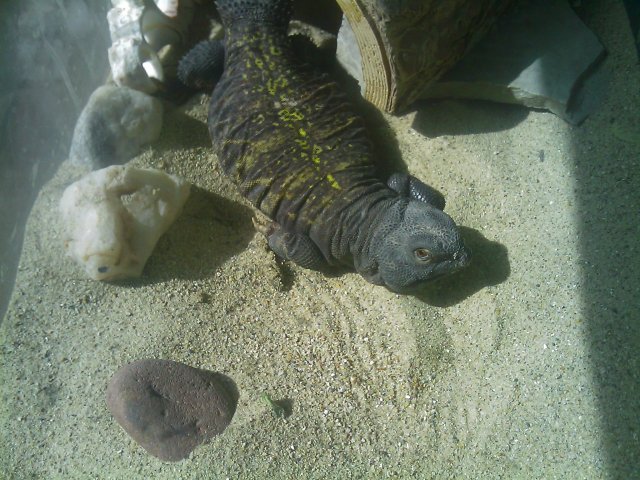 Uromastyx emergency
Question
Bazil
My 7 year old uromastyx has broken his l
Uromastyx emergency
Question
Bazil
My 7 year old uromastyx has broken his l
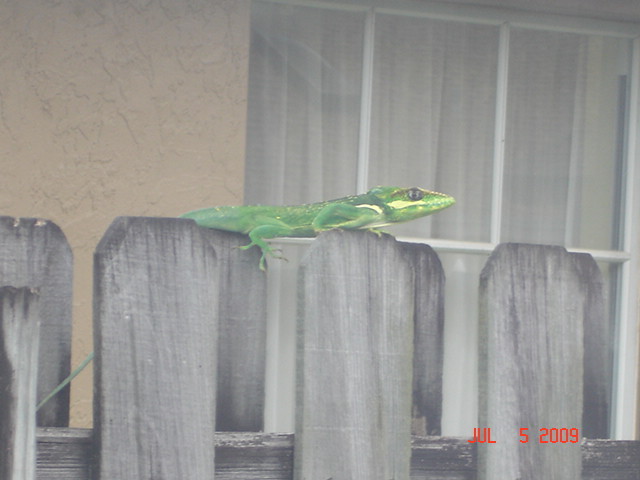 identifying a nonindigenous florida lizard
Question
lizard on fence
i live in a rural community in
identifying a nonindigenous florida lizard
Question
lizard on fence
i live in a rural community in